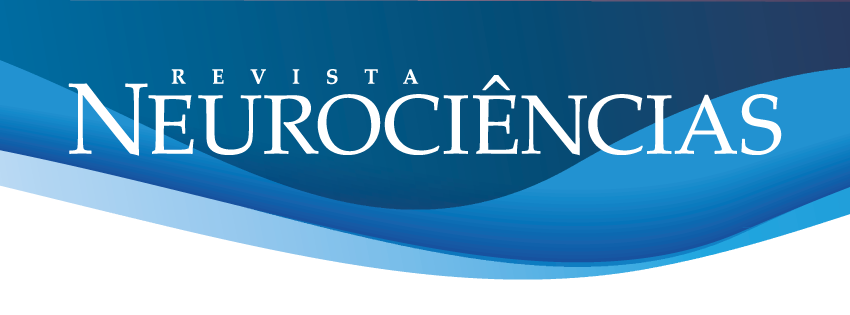Neuroscience and New Technologies Applied to Language Teaching
DOI:
https://doi.org/10.34024/rnc.2024.v32.16121Keywords:
Neuroscience, new technologies, anguage teachingAbstract
Introduction. Studies in neuroscience elucidate the mechanisms involved in learning, which are of great help to teachers. Objective. To raise scientific discoveries that promote a dialogue between cognitive neuroscience applied to education, new information and communication technologies and language teaching in the search for points of intersection. Method. Systematic Literature Review. Results. It was noticed that, in the current context, technology cannot be dispensed with in the classroom, as they are present in the students' daily lives, which would further distance the school from their realities. In addition, technologies are capable of instrumentalizing neuroscientific strategies, optimizing the learning process, especially with regard to language teaching. Conclusions. It is evident that the teachers need to know about brain functioning in order to offer effective tools to contribute to the cognitive development of their students.
Metrics
References
BRASIL. Ministério da Educação. Base Nacional Comum Curricular. Brasília: MEC, 2018. https://download.basenacionalcomum.mec.gov.br/
Bialystok E. Aquisição do segundo idioma e bilinguismo na primeira infância e seu impacto sobre o desenvolvimento cognitivo inicial. In: Tremblay RE, Boivin M, Peters RDeV (eds). Enciclopédia sobre o Desenvolvimento na Primeira Infância. Montréal-Quebec: CEECD Université de Montréal; 2017; p.1-5. https://www.enciclopedia-crianca.com/segundo-idioma/segundo-especialistas/aquisicao-do-segundo-idioma-e-bilinguismo-na-primeira-infancia
Alencastro MSC, Moser A. V Simpósio Tecnologia, humanismo e ética. Rev Tecnol Soc 2013;9:1-12. https://doi.org/10.3895/rts.v9n18.2638
Friederici AD. Evolution of the neural language network. Psychon Bull Rev 2017;24:41-7. https://doi.org/10.3758/s13423-016-1090-x
Feng G, Ou J, Gan Z, Jia X, Meng D, Wang S, et al. Neural fingerprints underlying individual language learning profiles. J Neurosci 2021;41:7372-87. https://doi.org/10.1523/JNEUROSCI.0415-21.202
Faruji LF. Neurolinguistics Aspects of Second Language Acquisition. Brain 2011;2:36-40. https://lumenpublishing.com/journals/index.php/brain/article/view/1894
Joodi N, Rahmani F. Application of functional magnetic resonance imaging in neurolinguistics: a systematic review. Front Biom Technol 2019;6:204-15. https://doi.org/10.18502/fbt.v6i4.2214
Verga L, Kotz SA. How relevant is social interaction in second language learning? Front Hum Neurosci 2013;7:550. https://doi.org/10.3389/fnhum.2013.00550
Alcântara CM, Melo MG, Linhares RN. Neurociência E Educação: As Pesquisas Sobre O Aprendizado De Um Segundo Idioma. Interfaces Cient Edu 2017;5:31-42. https://doi.org/10.17564/2316-3828.2017v5n3p31-42
Morato EM. Contribuições Da Neurolinguística Para A Linguística Aplicada 1-E Vice-Versa. Rev (Con)Textos Ling 2014;8:293-324. https://periodicos.ufes.br/contextoslinguisticos/article/view/8364
Asturias CC. La Neurolingüística Aplicada A La Didáctica De Lenguas Extranjeras: Los Sistemas De Memorias Y Sus Implicaciones Didácticas. Entreculturas 2016;7-8:139-4. https://doi.org/10.24310/Entreculturasertci.vi7-8.11331
Braun DA, Mehring C, Wolpert DM. Structure learning in action. Behav Brain Res 2010;206:157-65. https://doi.org/10.1016/j.bbr.2009.08.031
Arellano FJ, Moreno Del Pozo GF, Culqui CO, Tamayo Arrellano V. Procesamiento cerebral del lenguaje desde la perspectiva de la neurociencia y la psicolingüística. Rev Cienc Soc 2021;23:292-308. https://www.redalyc.org/journal/280/28069360021/html/
Grossi MGR, Lopes AM, Couto PA. A neurociência na formação de professores: um estudo da realidade brasileira. Rev da FAAEBA Edu Contemporan 2014;23:27–40. http://educa.fcc.org.br/scielo.php?script=sci_arttext&pid=S0104-70432014000100004&lng=pt&tlng=pt
Romero LDC, Guerrero Alcedo JM. Neuroscience and its applications in Education: a bibliometric review. Rev Ven Gerenc 2022;27:512-29. https://doi.org/10.52080/rvgluz.27.98.9
Paz M, Calafate L. As bases neur,onais da memória e da aprendizagem: Conhecer para atuar. Ver Multidisciplinar 2021;3:67-74. https://doi.org/10.23882/NE2148
Nascimento MSL, Santos LS, Cardoso MP, Melo MM. Neuroeducação e tecnologia: parceiras emergentes no processo ensino-aprendizagem no contexto do século XXI. Texto Livre 2022;15:e40459-9. https://doi.org/10.35699/1983-3652.2022.40459
Owens MT, Tanner KD. Teaching as brain changing: Exploring connections between neuroscience and innovative teaching. CBE Life Sci Edu 2017;16:1-9. https://doi.org/10.1187/cbe.17-01-0005
Falco M, Kuz A. Comprendiendo el Aprendizaje a través de las Neurociencias, con el entrelazado de las TICs en Educación. Rev Iberoam Tecnol Edu y Edu Tecnol 2016;17:43-51. http://www.scielo.org.ar/scielo.php?script=sci_arttext&pid=S1850-99592016000100006&lng=es&tlng=es
Nouri A. Cognitive Neuroscience of Foreign Language Education: Myths and Realities. Res Eng Lang Pedag 2015;4:40. https://relp.isfahan.iau.ir/article_533622.html
Viktorivna L, Oleksandrovych A, Oleksandrivna I, Oleksandrivna N. Artificial Intelligence in Language Learning: What Are We Afraid of. Arab World Eng J 2022;8:262-73. https://doi.org/10.24093/awej/call8.18
Vicari RM. Tendências em inteligência artificial na educação no período de 2017 a 2030 - Sumário executivo. Serviço Nacional de Aprendizagem Industrial, Serviço Social da Indústria, Brasília: SENAI; 2018; 52p. https://www2.fiescnet.com.br/web/uploads/recursos/d1dbf03635c1ad8ad3607190f17c9a19.pdf
Taie M. Towards post-postmethodism: Embracing a new generation of methodism. Theor Prac Lang Stud 2020;10:749-60. https://doi.org/10.17507/tpls.1007.05
Kupchyk L, Litvinchuk A. Constructing personal learning environments through ICT-mediated foreign language instruction. J Phys 2021;1840:012045. https://doi.org/10.1088/1742-6596/1840/1/012045
Niculescu BO, Obilișteanu G. Exploiting Information and Communication Technologies in Teaching a Foreign Language. Sci Bull 2017;22:38-45. https://www.armyacademy.ro/buletin/bul1_2017/NICULESCU_OBILISTEANU.pdf
Negoescu A, Boştină-Bratu S. Teaching and Learning Foreign Languages with ICT. Sci Bull 2016;21:21-7. https://sciendo.com/abstract/journals/bsaft/21/1/article-p21.xml
Kannan J, Munday P. New trends in second language learning and teaching through the lens of ICT, networked learning, and artificial intelligence. Cir Ling Apl Comunic 2018;76:13-30. https://doi.org/10.5209/CLAC.62495
Mendoza RM, Martínez EM. TIC y neuroeducación como recurso de innovación en el proceso de enseñanza y aprendizaje Rehuso 2020;5:85-96. https://doi.org/10.33936/rehuso.v5i2.2397
Sumakul DTYG, Hamied FA, Sukyadi D. Artificial Intelligence in EFL Classrooms: Friend or Foe? LEARN 2022;15:232-56. https://so04.tci-thaijo.org/index.php/LEARN/article/view/256723
Downloads
Published
How to Cite
Issue
Section
License
Copyright (c) 2024 Aline Montiel, Luciano Frontino de Medeiros

This work is licensed under a Creative Commons Attribution 4.0 International License.
##plugins.generic.dates.accepted## 2024-02-27
##plugins.generic.dates.published## 2024-04-05


 Português
Português
 English
English
 Español
Español
